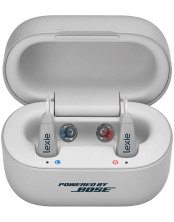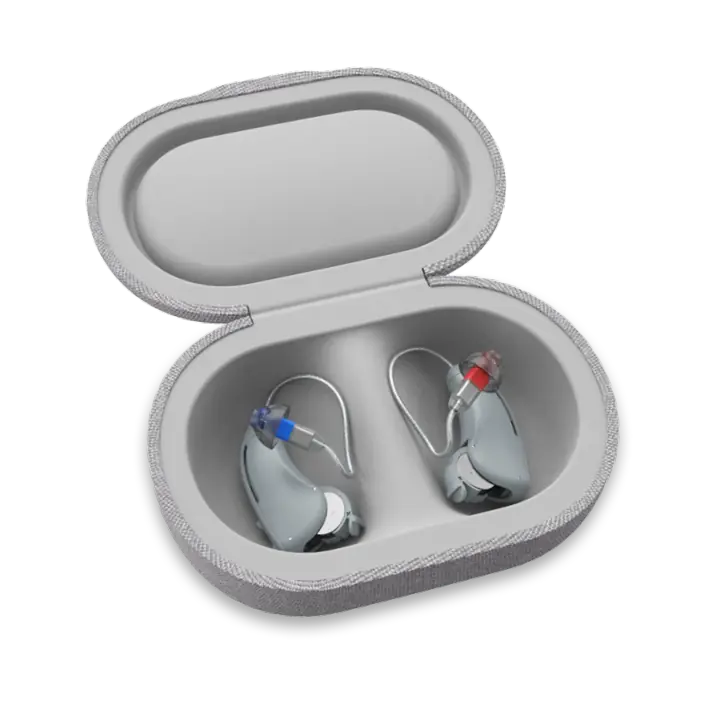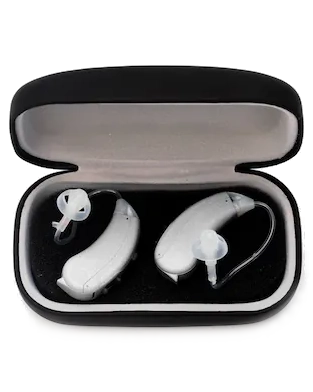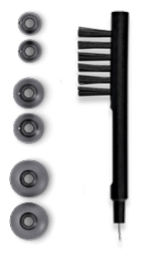How to Improve Hearing Acoustics in a Room
Published: July 15, 2020
Updated: July 20, 2022
Do you find that when you enter some rooms you hear better or worse than in other rooms? That’s because the acoustics in a room can affect your hearing.
You may find yourself in an environment where you can’t hear well. No matter if the volume on your hearing aid has been increased, if you’ve tried to stand closer to the person speaking to you or even asked them to speak slower, nothing improves your hearing. At first, you may think that your hearing aid is not sufficient for the listening environment. This is a possibility, however, another option is that the acoustics of the room are not good enough for hearing.
What does ‘room acoustics’ mean?
The acoustics of a room determine how sound behaves in an enclosed space. Every room has its own unique sound and feel due to the acoustic properties of the different materials in the room. Materials react differently to soundwaves. Some materials (soft furnishings) absorb sound, while others (hard walls) reflect sound waves. Rooms, where more reflected sound waves, are absorbed tend to offer a better listening experience for the hearing aid user.
Sound waves travel in straight lines. When these waves bounce off a surface, it is called a reflection or an echo. A single reflection may not be a problem for a hearing aid user. However, sound reflects off of more than one surface at a time. These reflected sound waves will then start to overlap, causing what is called reverberation. It is during the presence of reverberation that hearing aid users start to experience increased difficulty with their hearing ability.
Rooms designed for optimal sound experiences
Some rooms are specifically designed for optimal listening experiences. A concert hall’s acoustics are designed and set up to allow the natural reflection of sound, to enhance the effect of each instrument in the orchestra. Changing the acoustics of the hall will have a significant effect on your enjoyment of the music.
Modern design principles for rooms in our homes, offices, and public spaces do not typically allow for optimal acoustics. Larger open spaces and minimal soft furnishings, like curtains or carpets, reflect sound.
Hearing aids and acoustics
Modern hearing aids have been designed for listener comfort, especially when it comes to understanding speech in background noise situations. Most of them offer settings to manage background noise and to focus more on sounds coming directly from the speaker.
These additional features, however, cannot always manage the reverberation that is caused by the reflected sound of hard surfaces, like walls and floors. Reverberation can create big challenges for the hearing aid user, as the hearing aid picks up the sound and amplifies it. This can lead to sounds becoming distorted and make it more difficult to understand speech.
Hearing aid feedback and room acoustics
The effect of acoustics in a room is often overlooked as the cause of feedback in hearing aids. The reflection of sound can affect the feedback cancellation in a lot of hearing aids. The size, structure, and absorption properties of a room will greatly affect the strength of the reflected sound and can produce squeals with different characteristics.
What happens if the room’s acoustics are bad?
The acoustics of a room plays a crucial part in how well the person with hearing loss can function during a conversation.
- The listener will not be able to hear properly and have to strain more.
- It leads to a drop in concentration and fatigue.
- It can create a negative listening experience, especially for the hearing aid user, and can ultimately lead to that person avoiding similar places.
Office spaces are often very noisy on top of being larger open planned settings with lots of hard walls, glass and other reflective surfaces, tiles or hard floors, and little or no soft surfaces.
- Room acoustics in the workplace have a significant impact on the productivity of workers, especially those with hearing loss.
What can you do about your room?
- Identify the best spot in the room where you can hear optimally. Certain positions in a room may have less reverberation that can improve your hearing.
- If possible, include more soft furnishings that can absorb reflected sound waves in the room, like carpets or mats, curtains, and pillows. Also, consider tablecloths and chair covers as well as caps for table legs and chairs.
- Create separate obstructed areas and different seating arrangements in rooms with bad acoustics. Being able to stand or sit closer to the speaker will improve audibility and sound quality.
- If possible, install specialized acoustic panels to improve the sound quality. They are available in a variety of sizes, colors, and designs that can blend into or enhance the aesthetics of a room. Acoustic paneling can be fixed for e.g. mounted on walls and even replace ceiling tiles. Portable panels can be used to create separation screens at events or during meetings.
- Improved sound systems with specifically placed speakers can improve the sound quality in the room.
- Install a loop system or have portable loop systems available. Hearing loops transmit sound in the form of a magnetic field that can be picked up by a hearing aid when it is switched to the loop setting.
- Keep in mind that not all hearing aids are compatible with loop systems.
- By managing possible noise sources in a room, you can improve the listening experience in that room. Separate areas where conversations take place and reduce noise sources like music.
- Make sure the room is well lit to allow for lip-reading. Lip-reading improves the communication abilities of the person with a hearing loss.
Can your hearing aid help in a room with bad acoustics?
- Speak to your hearing aid provider for the best possible settings on your hearing aid to improve your ability to hear in rooms with bad acoustics.
- Use the directional features of your hearing aids. This will focus on sounds in front of you and can reduce some of the interference from reflected sounds.
- If your hearing aid is compatible with a companion microphone, it is worth considering because it allows you to choose the direction of the sound you want to focus on. It improves the signal-to-noise ratio and ultimately improves the clarity of the speech
- Use the telecoil in larger rooms where available.






